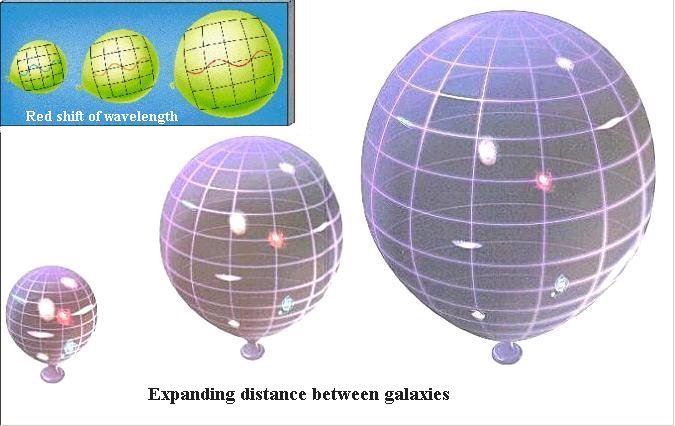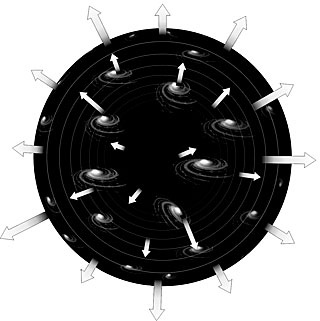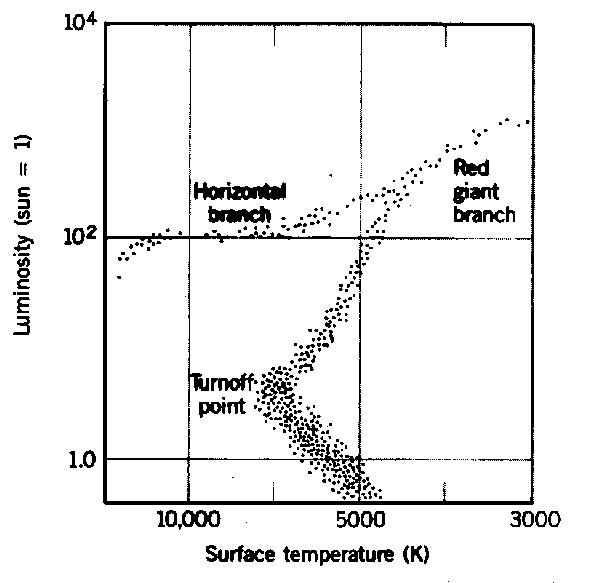 |
Hubble's Law and the Expansion of the Universe |
 |
Hubble's Law and the Expansion of the Universe |
The current explanation for Hubble's Law is shown in the above box where we see galaxies and light drawn (placed) on an expanding Universe. The expansion naturally streteches the wavelengths of light leading to the redshift and. as argued now, leads to all observers in the Universe seeing an uniform expansion.
 ExplosionA natural explanation is that an explosion occurred and that we are at the center of the Universe. Consequently, the galaxies are flying away from us in all directions and that the ones with larger initial kicks are now farther off. |
 Uniform ExpansionThe current preferred explanation is that the Universe expands uniformly (with no center). In this scenario, any observer in the Universe sees essentially the same thing and all observers find the same Hubble's Law! |
Initially, the choice was not obvious as to which of the above was correct. However, by this time people were loathe to believe that we occupied a preferred spot in the Universe. The Hubble law was interpreted as an indication of the uniform expansion of the Universe.
This age estimate has the potential of being annoying since there are stars which may be older than this.
Consider the ancient star clusters known as globular clusters:

|
 |